1. India Adds 7 Natural Sites to UNESCO Tentative List of World Heritage Sites – History and Culture
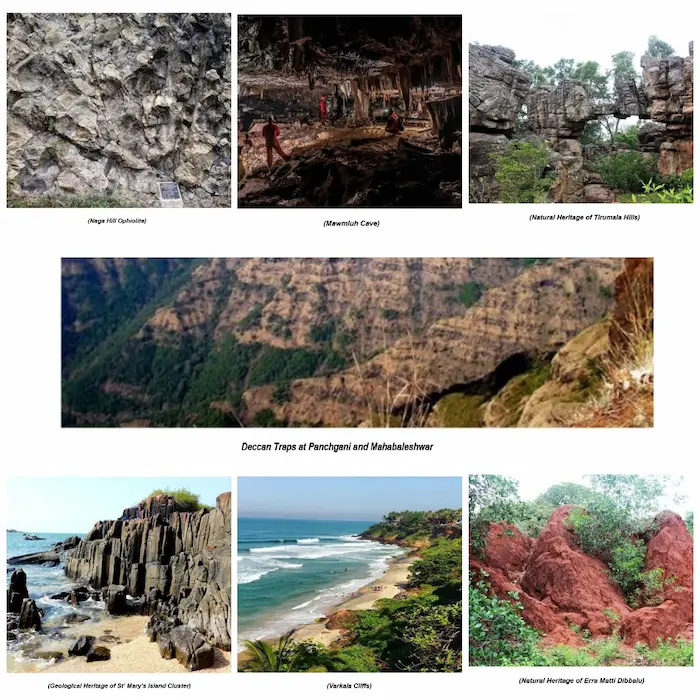
Why in News?
India has added 7 natural sites to the UNESCO Tentative List of World Heritage Sites (WHS), raising its total tentative entries to 69.
This highlights India’s commitment to preserving its natural and cultural heritage.
What is the UNESCO Tentative List?
- First step before nomination to the World Heritage List
- Countries identify sites of Outstanding Universal Value (OUV) and submit them to UNESCO
- Only sites on the Tentative List are eligible for full inscription
- In India, the Archaeological Survey of India (ASI) compiles and submits nominations
India’s Newly Added Natural Sites (2025)
| Site | State | Significance |
|---|---|---|
| Deccan Traps at Panchgani & Mahabaleshwar | Maharashtra | Ancient volcanic lava flows, part of Koyna Wildlife Sanctuary (already WHS) |
| St. Mary’s Island Cluster | Karnataka | Famous for columnar basaltic formations (Late Cretaceous, ~101–66 million yrs ago) |
| Meghalayan Age Caves (e.g., Mawmluh Cave) | Meghalaya | Global reference point for Meghalayan Age of Holocene Epoch (last 11,000 years) |
| Naga Hill Ophiolite | Nagaland | Rare ophiolite rocks → uplifted oceanic crust, insights into plate tectonics |
| Erra Matti Dibbalu (Red Sand Hills) | Andhra Pradesh | Paleo-climatic coastal formations; declared GeoHeritage Monument (2016) |
| Natural Heritage of Tirumala Hills | Andhra Pradesh | Eparchaean Unconformity (1.5 billion yrs old) & Silathoranam (Natural Arch), within Seshachalam Biosphere Reserve |
| Varkala Cliffs | Kerala | Exposes Warkalli Formation (Mio-Pliocene age), natural springs & unique erosional landforms |
World Heritage Sites (WHS) – Quick Facts
- WHS are sites of cultural, natural, or mixed significance, safeguarded under the 1972 UNESCO World Heritage Convention
- Overseen by the UNESCO World Heritage Committee
- India ratified the convention in 1977
- As of September 2025:
- India has 44 WHS (latest: Maratha Military Landscapes of India)
- With these 7 additions, India’s Tentative List = 69 sites
Exam Connect – Possible Questions
Prelims
1. Which of the following newly added UNESCO Tentative List sites is the Global Stratotype (reference point) for the Meghalayan Age?
A. Erra Matti Dibbalu
B. Mawmluh Cave
C. St. Mary’s Islands
D. Varkala Cliffs
Answer: B. Mawmluh Cave
2. Which of the following statements is correct about World Heritage Sites?
A. Only cultural sites are eligible for recognition.
B. India ratified the UNESCO World Heritage Convention in 1977.
C. Tentative List sites are automatically inscribed as WHS.
D. WHS are managed only by the UN General Assembly.
Answer: B. India ratified the UNESCO World Heritage Convention in 1977.
Mains
1.India has added seven natural sites to the UNESCO Tentative List of World Heritage Sites. Discuss the significance of such recognition for environmental conservation and cultural diplomacy. (Word Limit: 250)
2.“Geo-heritage conservation is as critical as biodiversity conservation.” Examine this statement in the context of India’s newly nominated UNESCO tentative sites. (Word Limit: 250)
2. Curbing Fake News in India – Challenges, Risks & Policy Responses – Polity
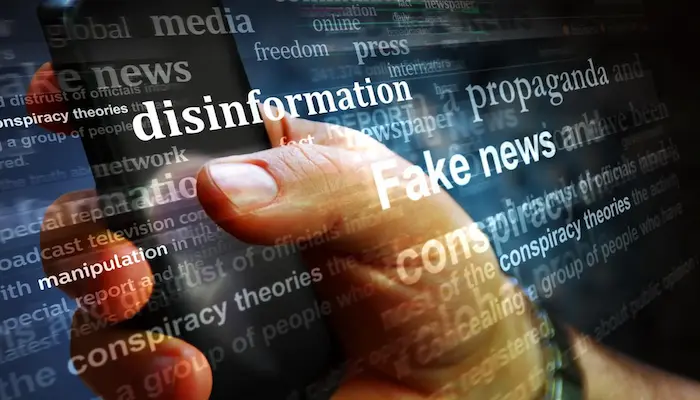
Why in News?
The Standing Committee on Communications & IT in Parliament has recommended stronger measures to tackle fake news and misinformation, citing risks to public order, democracy, and national security.
Key Recommendations of the Committee
| Recommendation | Purpose |
|---|---|
| Fact-checking mechanisms in media | Mandatory fact-check units + internal ombudsman |
| Stronger penalties | Increase fines, hold media accountable for misinformation |
| Define “Fake News” | Legal clarity without violating freedom of speech |
| Strengthen Press Council of India (PCI) | Complaint portal + independent monitoring body |
| Regulate AI-generated content | Licensing, clear labeling of AI/deepfake content |
Why Fake News is a Major Concern?
| Impact | Example |
|---|---|
| Threat to Democracy | Misinformation manipulates voter opinion (e.g., elections) |
| Right to Information undermined | SC in Raj Narain vs State of UP (1975) upheld RTI as part of democracy |
| Public Order Disruption | 2018 WhatsApp child-kidnapper rumors → mob lynchings |
| Health & Safety Risks | Covid-19 misinformation delayed vaccination |
| National Security Risks | Fake news during CAA protests (2020) → violence in cities |
| Erosion of Trust | Public loses faith in media, institutions, govt advisories |
Challenges in Regulating Fake News
- Definitional Ambiguity – No universal definition; overlaps with opinion/satire
- Freedom of Speech Concerns – Excess regulation may curb Article 19(1)(a) rights
- Rapid Spread on Social Media – Viral before fact-checking; jurisdiction issues (global platforms)
- Technological Complexity – Deepfakes, bots, AI content → hard to detect
- Anonymity – Difficult to trace originators
- Low Digital Literacy – Citizens vulnerable to manipulation
- Risk of Govt Overreach – May lead to censorship, misuse for political ends
- Polarization – Fake news aligns with biases, worsening social divides
India’s Initiatives Against Fake News
| Institution/ Law | Function |
|---|---|
| Press Council of India (PCI) | Ethical journalism guidelines |
| IT Act, 2000 (Sec. 79) | Intermediary liability; platforms lose safe-harbour if non-compliant |
| IT Rules, 2021 | Due diligence by intermediaries; grievance redressal |
| PIB Fact Check Unit | Counters govt-related misinformation |
| ECI – Myth vs Reality Register (2024) | Election-time fact-checking |
| MIB Advisory (2024) | Ban on misleading betting & surrogate ads |
| Indian Cyber Crime Coordination Centre (I4C) | Cybercrime & misinformation tackling framework |
| National Cyber Crime Reporting Portal | Citizens report online fraud/misinformation |
Robust Mechanisms Suggested
| Strategy | Example |
|---|---|
| Clear Legal Framework | Inspired by Singapore’s POFMA Act; EU Code of Practice on Disinformation |
| Institutional Fact-checking | Certified, audited fact-check orgs (EU Fact-Checking Standards Network) |
| Platform Accountability | EU Digital Services Act → disclosure of algorithms; removal of illegal content |
| AI for Good | Detect misinformation across languages (e.g., BHASHINI project) |
| Digital Literacy | Curriculum reforms; awareness campaigns via NGOs/influencers |
| Inter-Ministerial Coordination | Synchronize MeitY, MIB, MHA, Consumer Affairs; ensure checks against overreach |
Exam Connect – Possible Questions
Prelims
1. Under which case did the Supreme Court of India recognize Right to Information as part of Freedom of Speech?
A. Kesavananda Bharati v. State of Kerala (1973)
B. Raj Narain v. State of Uttar Pradesh (1975)
C. S.P. Gupta v. Union of India (1981)
D. Indira Gandhi v. Raj Narain (1975)
Answer: B. Raj Narain v. State of Uttar Pradesh (1975)
2. Which government initiative counters misinformation specifically related to government policies and programs?
A. ECI – Myth vs Reality Register
B. National Cyber Crime Reporting Portal
C. PIB Fact Check Unit
D. Press Council of India
Answer: C. PIB Fact Check Unit
Mains
1.“Fake news poses a direct challenge to India’s democracy and social cohesion.” Discuss the risks associated with misinformation and suggest a multi-pronged strategy to address it. (Word Limit: 250)
2.Balancing the regulation of fake news with the protection of free speech is a complex challenge. Critically examine India’s regulatory framework and suggest reforms, drawing lessons from global best practices. (Word Limit: 250)
3. Isobutanol-Diesel Blending: India’s New Biofuel Initiative – Science and Technology
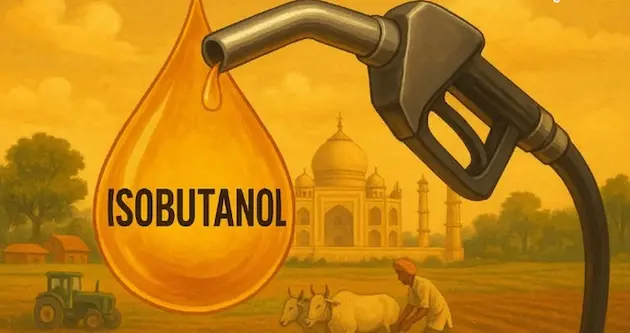
Why in News?
India has begun pilot projects to evaluate the technical and economic feasibility of blending isobutanol with diesel, as an alternative to ethanol.
This marks a new step in India’s biofuel diversification strategy aimed at energy security and climate goals.
Key Takeaways
| Aspect | Details |
|---|---|
| Fuel Innovation | First attempt to test isobutanol-diesel blends in India |
| Why Isobutanol? | More compatible with diesel than ethanol, safer, and versatile in production |
| Global Significance | If successful, India may pioneer this technology internationally |
| Policy Goal | Supports India’s climate targets & reduces reliance on imported fossil fuels |
What is Isobutanol?
- A four-carbon alcohol (C₄H₉OH)
- Widely used in paints, coatings, and chemicals
- Now being explored as a biofuel additive
Properties of Isobutanol
- Higher Flash Point → Less volatile, safer for transport & storage (vs ethanol)
- Better Miscibility with Diesel → Blends smoothly without major chemical modifications
- Versatile Feedstock → Can be produced from sugarcane syrup, molasses via microbial fermentation
Ethanol vs Isobutanol in Diesel Blending
| Feature | Ethanol | Isobutanol |
|---|---|---|
| Flash Point | Low → Fire risk | Higher → Safer |
| Miscibility | Poor with diesel (needs additives) | Blends easily |
| Infrastructure | Existing ethanol plants | Sugar refineries can adapt with minimal changes |
| Engine Performance | Compatible with petrol; problematic with diesel | More stable in diesel, but needs cetane improvers |
Technical Challenges with Isobutanol
- Lower Cetane Number → May reduce combustion efficiency
- Needs cetane improvers → Adds to blending costs
- Scaling up production requires ensuring economic viability alongside ethanol
Global & National Context
- India: Already leading in ethanol blending with petrol (20% target by 2025)
- Isobutanol blending = Next frontier for diesel-dependent sectors (transport, agriculture, heavy industry)
- Supports:
- Paris Climate Goals
- Energy diversification
- Reducing oil import bill
Exam Connect – Possible Questions
Prelims
1. Which of the following is an advantage of isobutanol over ethanol for blending with diesel?
A. Higher cetane number
B. Higher flash point and better miscibility
C. Lower production costs
D. Naturally blends with petrol without additives
Answer: B. Higher flash point and better miscibility
2. Which feedstock is commonly used for isobutanol production in India?
A. Paddy husk
B. Sugarcane syrup and molasses
C. Jatropha seeds
D. Groundnut oil
Answer: B. Sugarcane syrup and molasses
Mains
1.India’s experiment with isobutanol-diesel blending marks a new step in biofuel innovation. Discuss the opportunities and challenges this presents for India’s energy security and climate goals. (Word Limit: 250)
2.Compare ethanol and isobutanol as biofuel alternatives for India. How can biofuel diversification support sustainable development and reduce import dependency? (Word Limit: 250)
4. ICMR’s Impact of Research and Innovation Scale (IRIS): Measuring Biomedical Research Impact in India – Science and Technology
Why in News?
The Indian Council of Medical Research (ICMR) has launched the Impact of Research and Innovation Scale (IRIS) to quantify the impact of biomedical, public health, and allied research initiatives.
As India’s leading health research funding body, this initiative could reshape research priorities and resource allocation.
Key Highlights
What is IRIS?
- A quantitative tool to measure the impact of research in biomedical & public health fields
- Uses a metric called Publication-Equivalents (PEs)
How PEs Are Assigned
| Research Output | PE Value |
|---|---|
| Primary research article / Systematic review | 1 PE |
| Research cited in policies | 10 PEs |
| Patents | 5 PEs |
| Widely used commercial device | 20 PEs |
Objectives of IRIS
- Standardisation → Create a uniform metric applicable across biomedical disciplines (biochemistry, physiology, public health, etc.)
- Beyond Citations → Recognize diverse forms of impact (policy, patents, devices), not just academic citations
- Policy & Funding Linkage → Influence funding decisions based on measurable impact (PEs)
- Shaping Research Priorities → Encourage outcome-driven innovation aligned with India’s health challenges
Concerns & Limitations
| Concern | Implication |
|---|---|
| Weak theoretical basis | PEs may oversimplify impact; commentary/narrative reviews undervalued |
| Skewed incentives | Commercial devices (20 PEs) prioritized over critical policy impact (10 PEs) → risk of undervaluing basic science |
| Risk to public good | Emphasis on commercialization could undermine science as a public good |
| Transparency issues | Needs peer validation, accountability, and open methodology to gain credibility |
Global Context
- No universally accepted model for measuring research impact exists
- Other frameworks include:
- UK’s Research Excellence Framework (REF)
- Australia’s Research Impact Principles
- IRIS is India’s first attempt at creating a structured national metric
- Way Forward
- Ensure transparency & peer validation in PE assignment
- Balance commercial innovation with basic science & public health research
- Safeguard research as a public good while promoting industry linkages
- Align evaluation with India’s public health objectives, not just market outcomes
Exam Connect – Possible Questions
Prelims
1. The Impact of Research and Innovation Scale (IRIS) launched by ICMR uses which of the following metrics?
A. Citation Index
B. Publication-Equivalents (PEs)
C. H-Index
D. Impact Factor
Answer: B. Publication-Equivalents (PEs)
2. Which research output carries the highest PE value under IRIS?
A. Primary research article
B. Patent
C. Policy citation
D. Widely used commercial device
Answer: D. Widely used commercial device
Mains
1. ICMR’s IRIS initiative aims to quantify the impact of biomedical research in India. Discuss its significance in shaping health research policy while highlighting the ethical and structural challenges it may pose. (Word Limit: 250)
2.Commercialization of scientific research is often necessary but can undermine its role as a public good. Critically analyze this statement in the context of ICMR’s IRIS framework. (Word Limit: 250)
5. India on the U.S. Blacklist on Fentanyl – International Relations
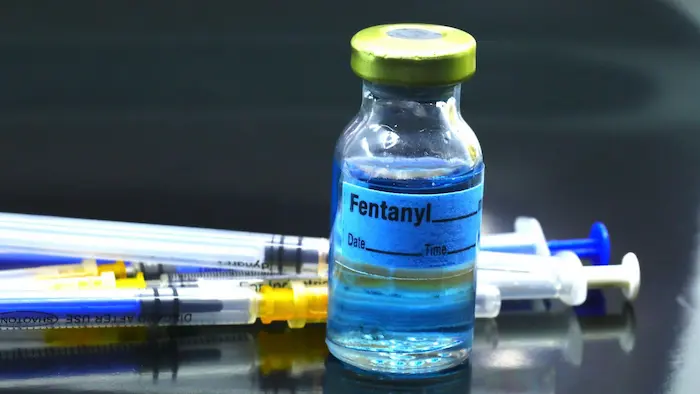
Why in News?
In the Major’s List report submitted to the U.S. Congress, President Donald Trump identified India, along with 22 other countries (including Pakistan, China, and Afghanistan), as significant sources or transit hubs for illicit drugs, particularly fentanyl.
This classification highlights the growing U.S. concern over synthetic opioid trafficking.
Key Highlights
- The Major’s List:
- Annual U.S. list identifying countries significantly involved in narcotics production or trafficking
- Includes both source nations and transit hubs
- India’s Mention:
- India identified for precursor chemical production
- Links to global fentanyl supply chains
- U.S. Concern:
- Fentanyl overdose → leading cause of drug-related deaths in America
Fentanyl – A Synthetic Opioid
| Feature | Details |
|---|---|
| Origin | Developed in 1960s for severe pain management |
| Potency | ~50 times stronger than heroin; 2 mg can be fatal |
| Medical Use | Prescribed for cancer and post-surgical pain |
| Crisis | Between Aug 2023–24 → 57,000 overdose deaths in U.S. (majority fentanyl-related) |
Supply Chain Complexity
- China & India → Producers of precursor chemicals
- Mexican cartels → Process precursors into fentanyl
- Smuggling routes → Mexico → U.S. markets
- Result → Global law enforcement challenge due to synthetic nature & ease of production
U.S. Response
- Law Enforcement: DEA seizures of fentanyl shipments
- Public Health Measures:
- Widespread distribution of naloxone (opioid overdose reversal drug)
- Expansion of addiction treatment programs
- Diplomatic Push: Urging cooperation from India, China, and Mexico
Implications for India
| Area | Impact |
|---|---|
| Diplomatic | Strains India–U.S. ties unless proactive cooperation shown |
| Pharma Industry | India is a major legal pharmaceutical hub → risk of reputational damage |
| Regulation | Need for tighter monitoring of precursor chemicals |
| Global Standing | India’s credibility as a responsible pharma exporter at stake |
| Security | Prevent misuse of Indian supply chains by global cartels |
Way Forward for India
- Strengthen precursor chemical regulation (licensing, tracking)
- Enhance India–U.S. cooperation under frameworks like INL (Bureau of International Narcotics and Law Enforcement)
- Use technology (blockchain-based supply tracking) for chemical monitoring
- Balance legitimate pharma exports with strict checks on diversion
- Engage multilaterally through UNODC to address synthetic drug threats
Exam Connect – Possible Questions
Prelims
1. Fentanyl, recently in news, is best described as:
A. A stimulant drug commonly used in energy drinks
B. A synthetic opioid, 50 times stronger than heroin
C. A naturally occurring hallucinogen derived from mushrooms
D. A precursor chemical used in fertilizers
Answer: B. A synthetic opioid, 50 times stronger than heroin
2. Which organization submits the Major’s List on narcotics to the U.S. Congress?
A. U.S. State Department
B. United Nations Office on Drugs and Crime (UNODC)
C. Drug Enforcement Administration (DEA)
D. U.S. President
Answer: D. U.S. President
Mains
1.The fentanyl crisis in the United States has significant implications for India’s pharmaceutical sector and international relations. Discuss the challenges and opportunities for India in addressing this issue. (Word Limit: 250)
2.“Synthetic opioids like fentanyl represent a new frontier in global narcotics control.” Examine the international security and diplomatic challenges posed by fentanyl trafficking. (Word Limit: 250)
6. US Sanctions on Chabahar Port and India’s Strategic Challenges – International Relations
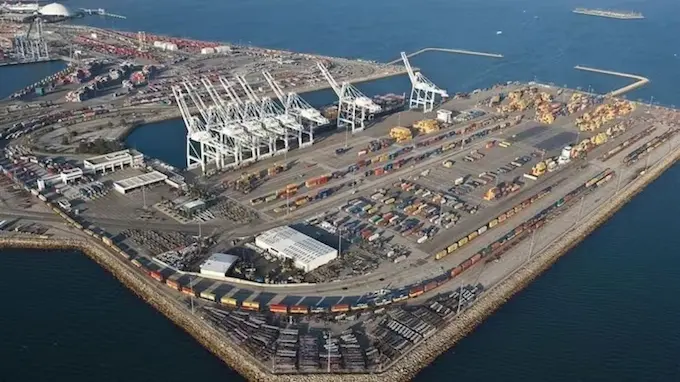
Why in News?
The Trump administration has revoked the U.S. sanctions waiver for Chabahar Port (Iran).
This waiver, granted in 2018 under the Iran Freedom and Counter-Proliferation Act (IFCA), had allowed India to develop the port as a gateway to Afghanistan and Central Asia.
Its revocation now threatens India’s strategic, economic, and diplomatic interests.
Implications of Revoking Chabahar’s Waiver for India
Strategic Implications
- Weakens India’s ability to counterbalance China’s Gwadar Port (Pakistan)
- Reduces India’s leverage in Afghanistan & Central Asia
- Hampers India’s role in the International North-South Transport Corridor (INSTC)
Economic & Trade Implications
- Risk to $120 million investments and $250 million commitments by India
- Disruption in India’s exports (pharma, textiles, engineering goods, food products)
- Coincides with India-U.S. trade frictions (tariffs on labor-intensive goods)
Operational & Legal Risks
- Indian Ports Global Limited (IPGL) may face exposure to U.S. sanctions under IFCA
- Possible delays or suspension of port operations and expansion projects
Geopolitical Implications
- Strains India-U.S. relations amid growing India-Iran strategic ties
- Hampers India’s humanitarian aid efforts to Afghanistan
- Weakens India’s ability to project influence in West Asia and the Indian Ocean
Chabahar Port – An Overview
- Location: Sistan-Baluchistan, Iran (Makran coast, Gulf of Oman, outside Strait of Hormuz)
- Unique Feature: Iran’s only deep-sea port with direct open-ocean access
- Terminals: Shahid Beheshti & Shahid Kalantari (India developing Beheshti)
Development & Management
- Chabahar Agreement (2016): India–Iran–Afghanistan transit corridor
- Operator: India Ports Global Limited (IPGL) through IPGCFZ (since Dec 2018)
Operational Performance
- Trans-shipped 2.5 million tonnes of wheat & 2,000 tonnes of pulses to Afghanistan
- Supplied 40,000 litres of Malathion to Iran for locust control (2021)
- Facilitated Covid-19 humanitarian aid
Significance of Chabahar Port for India
| Dimension | Importance |
|---|---|
| Alternative Route | Access to Afghanistan & Central Asia bypassing Pakistan |
| Connectivity Hub | Links India with INSTC → shorter trade route to Russia & Europe |
| Economic Benefits | Cuts trade cost by 30% & transit time by 40% |
| Humanitarian Aid | Gateway for aid/reconstruction in Afghanistan |
| Strategic Counterweight | Counters Gwadar Port & China’s Belt and Road Initiative (BRI) |
| Security Role | Enhances India’s role in anti-piracy & maritime stability |
Way Forward for India
- Diplomatic Engagement: Balance ties with both U.S. & Iran to protect interests
- Multilateral Approach: Push Chabahar as a global connectivity project under INSTC
- Economic Diversification: Strengthen India’s role in Central Asian trade corridors
- Strategic Autonomy: Leverage India’s independent West Asia policy to maintain access
- Technology Solutions: Use digital tracking of cargo & banking channels to avoid sanctions loopholes
Exam Connect – Possible Questions
Prelims
1. Which of the following correctly explains the strategic importance of Chabahar Port for India?
A. It provides India direct access to Europe via the Suez Canal
B. It provides India an alternative trade route to Afghanistan bypassing Pakistan
C. It is part of China’s Belt and Road Initiative
D. It connects India with the Arctic shipping routes
Answer: B. It provides India an alternative trade route to Afghanistan bypassing Pakistan
2. Chabahar Port is located on the coast of which body of water?
A. Strait of Hormuz
B. Gulf of Oman
C. Persian Gulf
D. Arabian Sea
Answer: B. Gulf of Oman
Mains
1.Chabahar Port is often described as India’s gateway to Afghanistan and Central Asia. Discuss its strategic and economic significance, and analyze the challenges posed by U.S. sanctions. (Word Limit: 250)
2.“Chabahar is central to India’s pursuit of strategic autonomy in West Asia.” Examine this statement in light of shifting global geopolitics. (Word Limit: 250)

